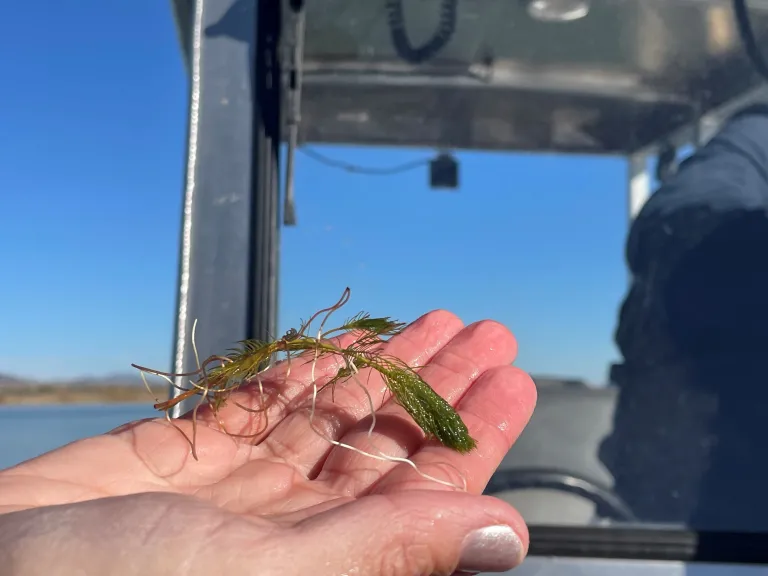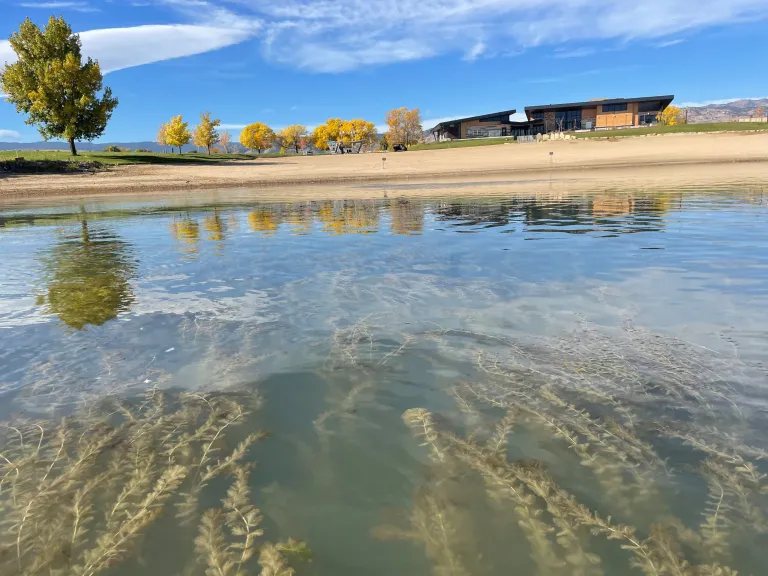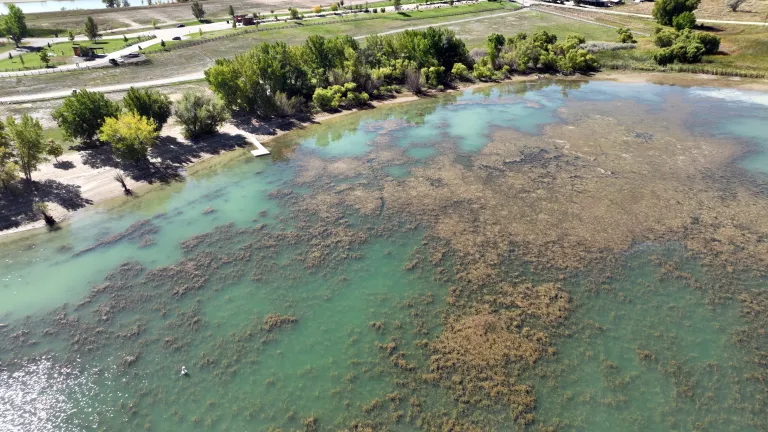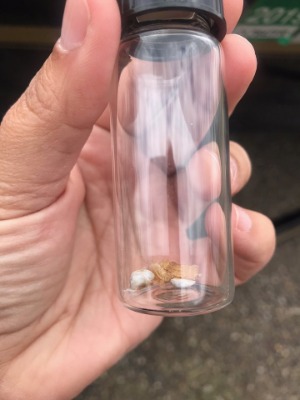Aquatic Nuisance Species (ANS) at the Boulder Reservoir
July 2025 update
In summer 2022, Colorado Parks and Wildlife detected Eurasian watermilfoil (EWM), an invasive plant, in the Boulder Reservoir. Since then, EWM has become established in the Reservoir. It has spread significantly in the western coves and the swim beach, impacting boating and swimming. If it continues to spread, EWM may also impact the 63rd Street Water Treatment Plant intake, a backup water supply for the City of Boulder, and the Boulder Creek Supply Canal, which Northern Colorado Water Conservancy District (Northern Water) uses to deliver water to downstream users.
Northern Water and the city are working to build on existing hand removal in designated swim areas, by using broad-scale harvesting EWM removal across the reservoir. The partners evaluated the use of chemical treatment (herbicides) but have paused pursuing that approach due to implementation challenges associated with the reservoir’s primary function as a regional water supply. Large-scale harvesting will likely be conducted primarily through Diver Assisted Suction Harvesting (DASH) to reduce EWM biomass, limit it’s spread, and maintain safe recreational access in the reservoir.
July 2024 update
In summer 2022, Colorado Parks and Wildlife detected Eurasian watermilfoil (EWM), an invasive plant, in the Boulder Reservoir. Since then, EWM has become established in the Reservoir. It has spread significantly in the western coves and the swim beach, impacting boating and swimming. If it continues to spread, EWM may also impact the 63rd Street Water Treatment Plant intake, a backup water supply for the City of Boulder, and the Boulder Creek Supply Canal outlet, which Northern Colorado Water Conservancy District (Northern Water) uses to deliver water to downstream users.
Northern Water and the city hired a subject-matter expert in aquatic nuisance species to develop an adaptive management plan and recommend management options, which include using a targeted herbicide within the next year to manage EWM’s spread and minimize its impacts. Working with a licensed herbicide applicator, Northern Water and the city will create a targeted herbicide application plan to inform how to move forward with treatments on an as-needed basis.
The selected herbicide will be triclopyr, because it is effective and has the fewest impacts to water quality. It is already used by Northern Water in areas adjoining the Boulder Feeder Canal upstream of the Reservoir. Triclopyr was reviewed and approved for targeted EWM control in the Boulder Reservoir by the city’s Integrated Pest Management program.
Help protect our water resources
Did you know that ANS are primarily transported between waterways by people and dogs? You can help protect our waterways and stop the spread of these “aquatic hitchhikers”!
- Clean off all plants, dirt and debris, from your gear, shoes, dogs and watercraft.
- Decontaminate your watercraft, trailer and personal gear before moving to another waterway.
- Dispose of all bait, aquatic plants and organisms in the trash. Live bait is allowed at Boulder Reservoir and boaters must show a receipt that the bait was purchased within seven days of use from a Colorado commercial bait dealer and the receipt must itemize the type of the bait purchased.
- Do not release anything from a personal aquarium (water, plants, fish or animals) into or near any body of water or storm drain.
- Educate your family and friends about preventing the spread of ANS to protect our previous waterways and ecosystems.
EWM at Boulder Reservoir
While the exact path of EWM to the Boulder Reservoir remains uncertain, it could have been introduced through multiple methods such as wind, fishing activities, animals, humans, or watercraft. It's important to note that even a single fragment of this plant can lead to its spread and establishment in new areas. EWM has become established in the Reservoir. It has spread significantly in the western coves and the swim beach, impacting boating and swimming.
EWM could further impact the following services at Boulder Reservoir:
- Swimming – Dense plant growth could limit swimming access though staff are working to manually remove the plant in key areas.
- Large and small watercraft – EWM can get tangled in boat propellers and engines, which can increase its spread. Dense plant growth can also make paddle craft use difficult.
- Adjacent bodies of water – EWM may also spread to nearby waterbodies such as Coot Lake.
- Water supply – The Reservoir is jointly managed by the city and Northern Water as a water supply for the region and for the city. The 63rd Street Water Treatment Plant primarily treats water from Carter Lake directly through a pipeline, rarely treating water directly from Boulder Reservoir. Because EWM can cause taste and odor issues in drinking water and clog water intakes and outlets, Northern Water is partnering with the city on an EWM management plan
Boulder Reservoir’s ANS prevention program
Protecting Boulder Reservoir and our waterways from ANS starts with prevention and public education. Despite having one of the most stringent ANS prevention programs in Colorado, EWM still established in Boulder Reservoir.
To manage EWM in the Reservoir, the city is implementing the following actions:
- Conduct routine vegetation surveys to assess/track EWM’s growth and spread. These surveys help to inform management actions.
- Continue watercraft inspections and decontaminations, which includes inspecting large watercraft, and small watercraft as allowed, entering and exiting Boulder Reservoir. Boaters will receive a blue paper receipt indicating that their boat was last inspected at an ANS-positive body of water.
- Encourage all visitors to follow a “Clean, Drain, and Dry” practice to confirm that they are not transporting ANS to or from Boulder Reservoir.
- Urban Park Rangers and city volunteers will continue to provide education to visitors on the North Shore about EWM and preventing the spread of ANS.
- Continue the ban on watercraft along the North Shore. Anyone with watercraft or a flotation device in this area and around Coot Lake will be issued a summons with a potential fine. Continue the moratorium on permits for new class 5 watercraft, which have ballast tanks that can unknowingly transport ANS.



